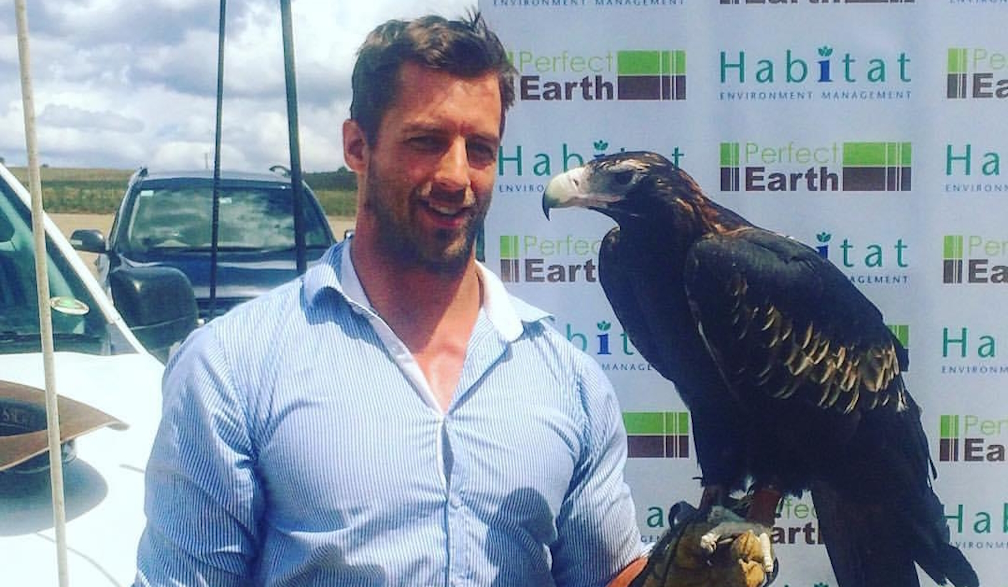Opportunities in the Blue Carbon Space through Khory Hancock’s Lens

Restoring and protecting our marine ecosystems has never been more pressing. As our oceans face numerous threats from pollution, overfishing, and climate change, we must take action to safeguard these vital ecosystems. Many initiatives have been introduced to recover the oceans from the damage already caused. However, irregular funding and lack of attention from the business community have been a big hurdle in getting the desired results.
To secure regular funds and run the projects smoothly, many environmental scientists are working to create solutions that can incentivize marine restoration. Among these individuals is Khory Hancock, an environmental scientist and entrepreneur passionate about restoring marine habitats and exploring innovative ways to mitigate climate change.
Hancock's vision is to harness the power of the blue carbon ecosystem to restore our coasts and seas and provide valuable carbon credits that can incentivize conservation efforts.
But what exactly is the blue carbon ecosystem, and what opportunities does it offer?
“Blue carbon refers to the carbon captured and stored by coastal and marine ecosystems such as mangroves, seagrasses, and tidal marshes,” Hancock highlights. These ecosystems play a crucial role in sequestering carbon dioxide from the atmosphere, helping to mitigate climate change. However, many of these habitats have been degraded or destroyed, releasing stored carbon into the atmosphere and exacerbating global warming.
Hancock sees this as a tremendous opportunity to invest in restoring these valuable ecosystems while earning blue carbon credits. These credits can be sold on the carbon market, providing financial incentives for conservation efforts and helping to fund restoration projects. According to Hancock, there are multiple opportunities in the blue carbon space.
Cultivating seaweed is one of the most promising opportunities that sequesters large amounts of carbon which therefore provides significant financial opportunity. Seaweed sequesters carbon at a rate 30-60 times faster than any land based plant and also provides a habitat for marine life. Additionally, seaweed improves water quality which can lead to coral restoration and can be harvested for use in food, fuel, and other products.
Another opportunity, in particular in reef catchment areas are reef credits. Coral reefs are among the most biodiverse ecosystems on the planet, providing habitat for countless species of fish and other marine life. By investing in reef restoration projects that aim to improve water quality runoff, individuals and organizations can earn credits that can be traded, providing a valuable source of funding for these efforts.
Mangrove forests are also one of the most effective ecosystems in terms of carbon sequestration. Initiatives focused on restoring degraded mangrove areas or conserving existing mangrove forests offer opportunities for generating carbon credits.
Seagrass meadows are yet another vital blue carbon ecosystem. Programs to protect existing seagrass habitats from degradation or restore degraded seagrass areas can generate carbon credits.
The potential impact of these initiatives is immense. By restoring and protecting coastal and marine ecosystems, we can sequester large amounts of carbon and provide numerous co-benefits such as coastal protection, habitat restoration, and sustainable livelihoods for coastal communities. These efforts can also help to enhance resilience to climate change and mitigate the impacts of rising sea levels and extreme weather events.
Corporations increasingly recognize the importance of investing in nature-based solutions such as blue carbon to offset carbon emissions. By purchasing blue carbon credits, companies can demonstrate their commitment to environmental sustainability while meeting their carbon reduction targets. This creates a win-win situation where businesses can support conservation efforts while improving their environmental performance.
In conclusion, the blue carbon ecosystem offers many opportunities for investors, entrepreneurs, and conservationists alike. Through innovative approaches such as seaweed cultivation, reef restoration, and mangrove conservation, we can harness the power of nature to combat climate change and protect our oceans for future generations.
With business leaders like Khory Hancock paving the way, the benefits of credits in the blue carbon space look more promising than ever.

















